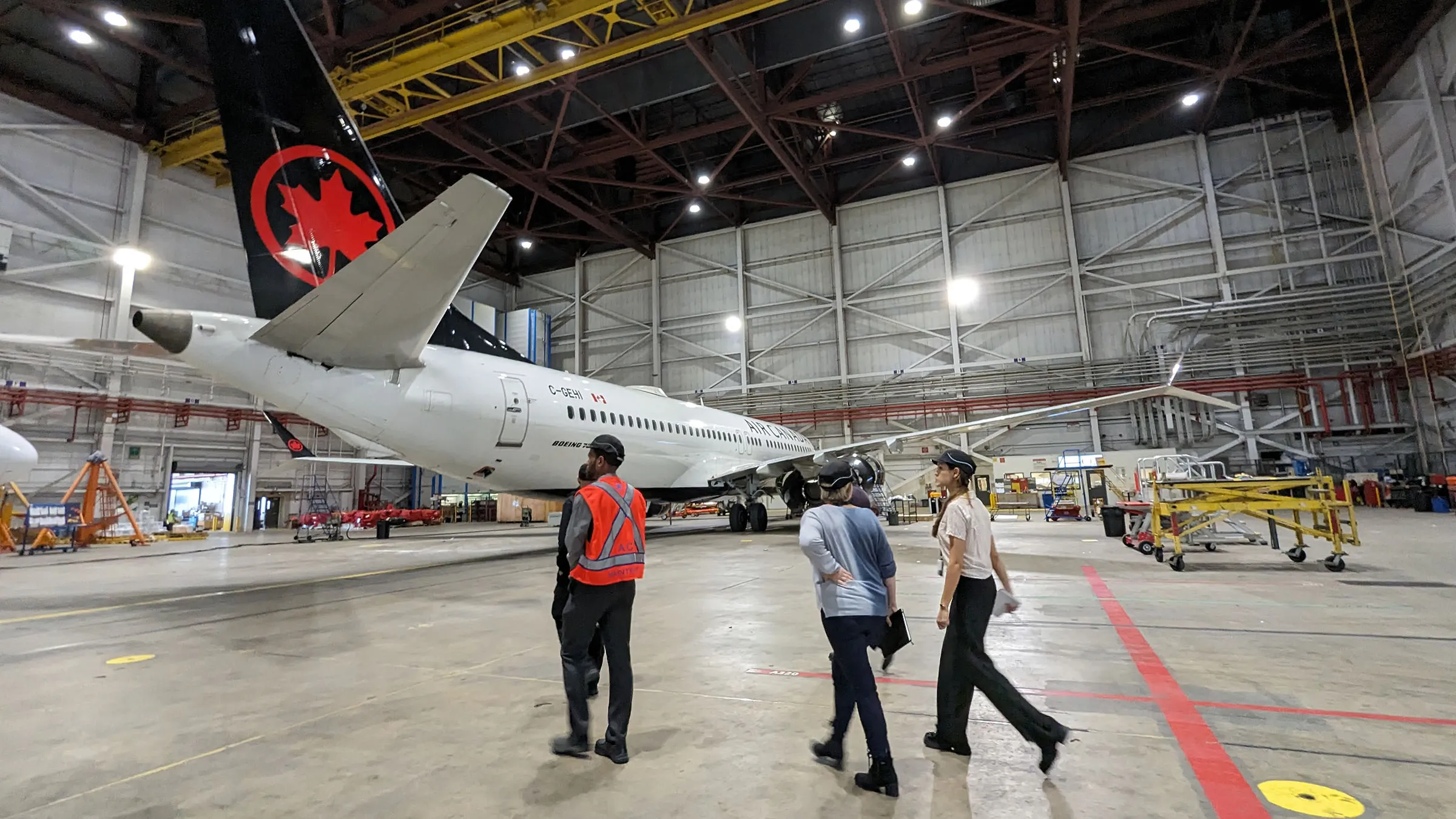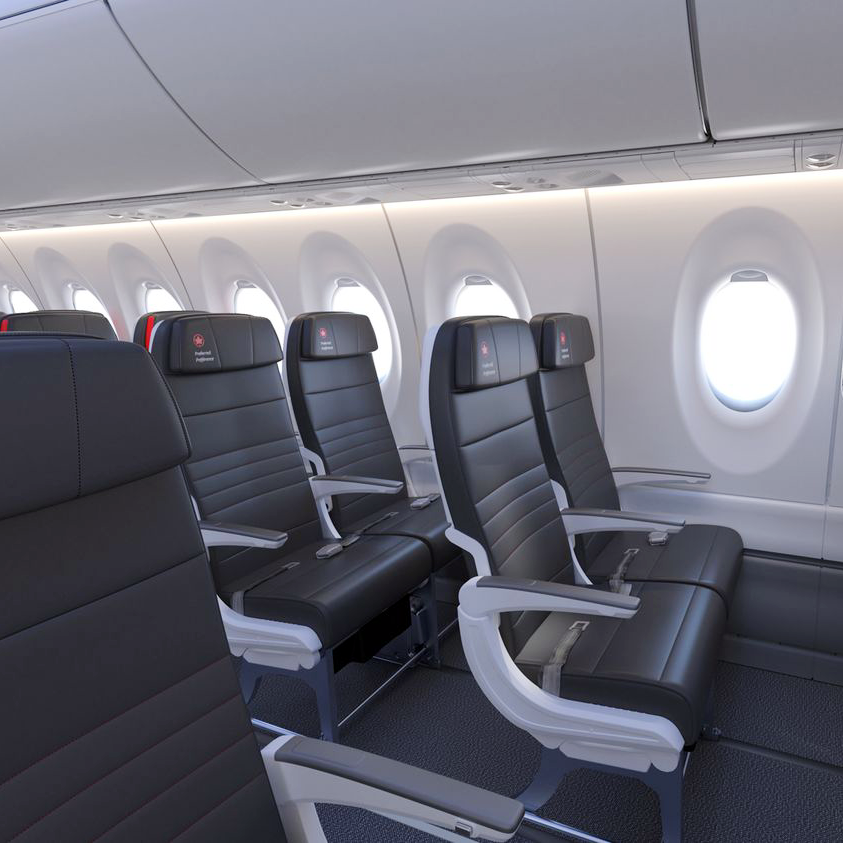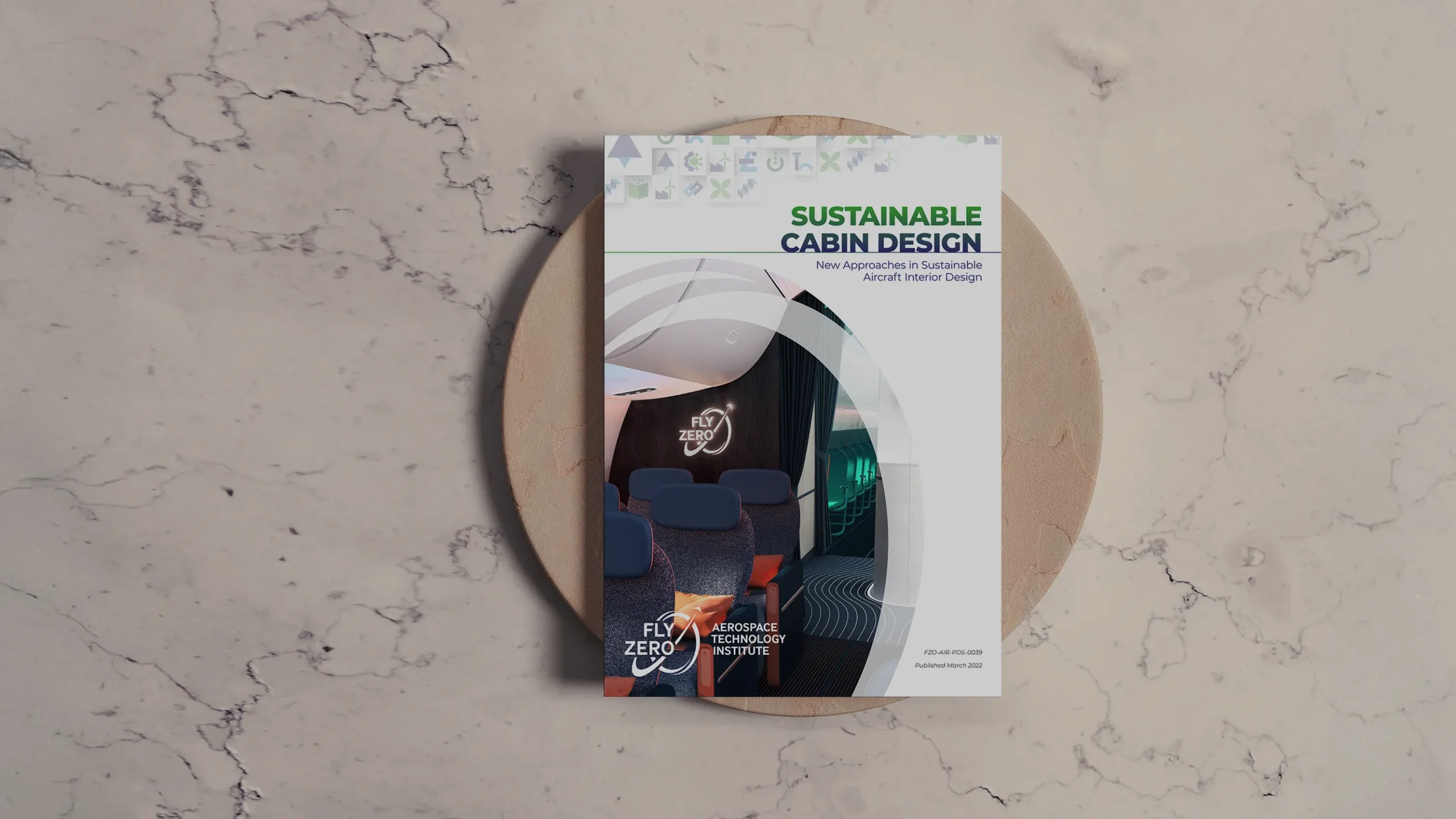
Air Canada / Cabin Sustainability Audit
Air Canada is moving toward a cabin strategy based on circular economy principles. The airline mandated Orson Associates to obtain a detailed and validated breakdown of the impact characteristics of a large and diverse set of legacy cabin products, across multiple aircraft types, to enable prioritising investment in future improvements.
The analysis was conducted in two phases, a rapid heat-mapping of the Airbus A220 and Boeing 787 cabins to discover the hotspots, and then a deep dive using ISO aligned lifecycle assessment (LCA) to understand the most problematic elements in more detail. This work then enabled the creation of an Action Plan identifying practical and impactful changes Air Canada could make in pursuit of enhanced sustainability performance,
Key content
Aircraft surveys
Supply chain mapping
Streamlined LCA (sLCA)
ISO LCA
Product appraisal and decision support
Sustainable product development action plan
Awards
UK Aerospace’s most impactful small R&D projects, short-listed
Short listed
Phase 1 / Hotspot mapping

Our team embedded on site for 3 months to accelerate progress
Analysis of large product sets using traditional LCA techniques can be logistically impractical, costly and time consuming. Faced with an entire airline fleet, we needed a way to quickly filter out the relatively benign items so we could focus on those with the greatest impact.
Picking the most future-relevant airframes, the Airbus A220 and Boeing 787, we applied our sector-tailored sLCA methodologies, data sets and experience, enabling us to deliver a hotspot analysis in a matter of weeks. A key part of the process was the creation of a bill-of-materials from 3D models derived from photographs gathered in rapid surveys of aircraft undergoing scheduled maintenance. Freed from reliance on the supply chain for our data, this innovative approach minimised the administrative burden on Air Canada and significantly accelerated progress.
1. Develop Framework
Develop a bespoke analytical framework to assess cabin product’s sustainability.
2. Compile Inventory
Obtain cabin product data for selected aircraft models.
3. Obtain Impacts
Retrieve the official sustainability impacts for cabin materials identified
4. Qualitative Adjustments
Extend the analytical tool to account for relevant qualitative factors
5. Interpret Outputs
Summarise assessment results and deduce relevant insights
Bespoke streamlined LCA methodology

Cabin product impact ranking
Our team was able to analyse a complex and misunderstood aspect of cabin design and rapidly translate the findings into simple, prioritised lists of items that Air Canada could address.
The priority listings considered environmental, passenger experience, operational and other vital factors. Each product’s entry provided an evidence-based justification for its ranking, accompanied by a clear description of the nature of its environmental impacts and suggestions for how these could be resolved. Consequently, Air Canada is now better informed to develop its plans for the next generation of cabins, and to allocate resources where the greatest value in the shortest timeframe will be delivered
Phase 2 / ISO Life cycle assessment

Photo credit Rohi Stoffe GMBH
Suppliers interviewed

Products investigated

Photo credit Rohi Stoffe GMBH
Processes quantified
Sector expertise enables rapid data collection
Having identified the cabin items that were both impactful and practical to change, we were able to conduct an ISO 14040/14044 compliant LCA to precisely quantify each item’s impact contributions across Air Canada’s prioritised impact categories. Benchmark tools (SimaPro and Ecoinvent), our team’s familiarity with the products and extensive cabin sector network enhanced the speed with which we were able to gather the lifecycle inventory and its fidelity.
The results of this analysis were tailored to the requirements of several departments including procurement, product development and maintenance, enabling each to independently integrate the information into their established working practices. Close collaboration with the Air Canada throughout the project empowered their internal teams with a deep understanding of the product lifecycles and the critical aspects that contribute the greatest impact.
System mapping
Thorough analysis of each product lifecycle supports an understanding of the factors and processes driving specific impacts.
Contribution analysis
Precise quantification of the scale of impact across the different categories allows comparison of contribution at a material, part or product level.
Material flows
LCA is a systems oriented approach. Understanding the flows of products and materials in systems is vital to compiling the model that deliver the results.
Action Plan
A comprehensive understanding of product lifecycles enables precise and efficient targeting of solutions to sustainability issues. Our Action Plan for Air Canada leverages this fact to define a set of propositions that would deliver the greatest reduction in impact with minimal cost and operational disruption. Simple procedural changes and strategic procurement of new products and materials have great potential to benefit the environment without negative impact to passenger experience or profits, indeed in many cases these should be improved.

Sector expertise enables rapid data collection

Joshua Wilkie
Manager, Waste Management and Circular Programs, Air Canada

